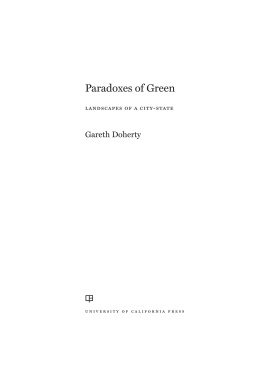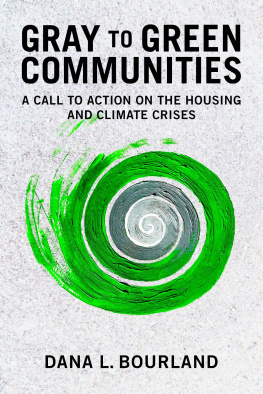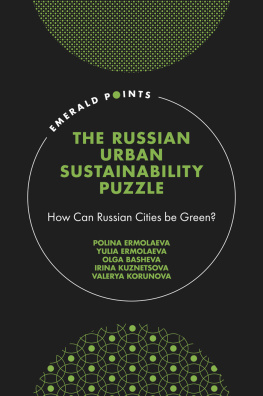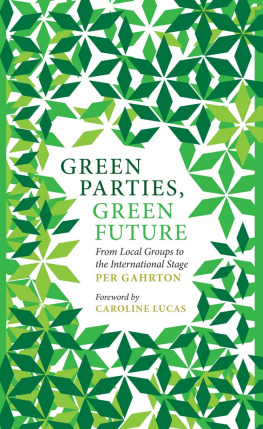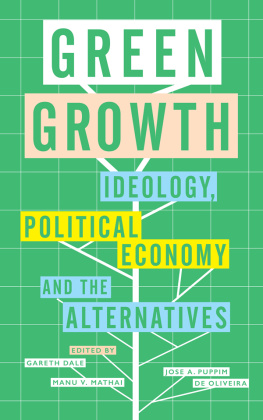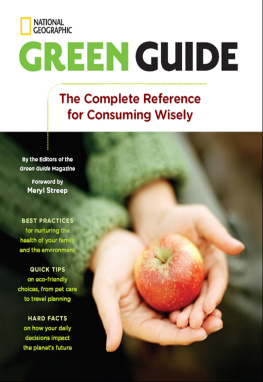The publisher gratefully acknowledges the generous support of the Richard and Harriett Gold Endowment Fund in Arts and Humanities of the University of California Press Foundation.
Paradoxes of Green
LANDSCAPES OF A CITY-STATE
Gareth Doherty

UNIVERSITY OF CALIFORNIA PRESS
University of California Press, one of the most distinguished university presses in the United States, enriches lives around the world by advancing scholarship in the humanities, social sciences, and natural sciences. Its activities are supported by the UC Press Foundation and by philanthropic contributions from individuals and institutions. For more information, visit www.ucpress.edu.
University of California Press
Oakland, California
2017 by The Regents of the University of California
Sections of the text contain some data or analytical points published in earlier forms including, Theres More to Green than Meets the Eye: Green Urbanism in Bahrain, Ecological Urbanism , Mohsen Mostafavi and Gareth Doherty, eds. (Zurich: Lars Mller Publishers, 2010, 2016), 178187; In the west you have landscape, here we have... Studies in the History of Gardens and Designed Landscapes, Vol. 34 (3), 2014, 201206; Bahrains Polyvocality and Landscape as a Medium, The Right to Landscape: Contesting Landscape and Human Rights, Shelley Egoz, Jala Makhzoumi, Gloria Pungetti, eds., (Abingdon, Oxon: Ashgate Publishing, 2011), 185196; Changing Hues of Green in Bahrain, Society and Change in the Contemporary Gulf, A.K. Ramakrishnan and M.H. Ilias, editors, (New Delhi: New Century Publications, 2010); If Its Not Green It Will Become Invisible: A Sociological Account of Green in Bahrain, Al Manakh 2 , Todd Reisz, ed., 2010, 342345, and How Green is Landscape Urbanism? Topos (71), Munich, 2010, 3235.
Library of Congress Cataloging-in-Publication Data
Names: Doherty, Gareth, author.
Title: Paradoxes of green : landscapes of a city-state / Gareth Doherty.
Description: Oakland, California : University of California Press, [2017] | Includes bibliographical references and index.
Identifiers: LCCN 2016030087 (print) | LCCN 2016031250 (ebook) | ISBN 9780520285019 (cloth : alk. paper) | ISBN 0520285018 (cloth : alk. paper) | ISBN 9780520285026 (pbk. : alk. paper) | ISBN 0520285026 (pbk. : alk. paper) | ISBN 9780520960626 (ebook)
Subjects: LCSH : Urban landscape architectureBahrain. | GreenSocial aspectsBahrain. | ColorsSocial aspectsBahrain. | GreenbeltsBahrain.
Classification: LCC SB 472.7 . D 64 2017 (print) | LCC SB 472.7 (ebook) | DDC 712/.5095365dc23
LC record available at https://lccn.loc.gov/2016030087
Manufactured in the United States of America
26 25 24 23 22 21 20 19 18 17
10 9 8 7 6 5 4 3 2 1
For Miss Magee

Thalthat ashy yudhhibn al-uzn:
al-m wa-l-khura wa-l-wajh al-asan
Three things take away sadness:
water, greenery, and a beautiful face
Contents
Notes on Transliteration and Translation
Transliterations of Modern Standard Arabic and Bahraini dialect are modified from the conventions of the International Journal of Middle Eastern Studies (IJMES). Specifically, IJMES conventions were followed for technical terms and expressions and vocabulary in Arabic, but proper and place names conform with their general attestation in English spelling in a Bahrain-related context. For example, rather than use the IJMES spelling shaykh, I use sheikh, which is standard in the Arab States of the Persian Gulf. Many place and institutional names in Bahrain have generally accepted English spellings, which I use, that do not conform to a standard and have many varieties, for example, Riffa, rather than al-Rifa. Personal names like Alireza, Isa, and Latif are generally accepted spellings of these names in English. With the exception of a few public figures, all names in this book have been changed.
Preface and Acknowledgments
My first encounter with Bahrain was when I responded to an advertisement in Landscape Design, the journal of the Landscape Institute in London, which called for speakers on landscape architecture at a conference in Manama. It was 2003, and I had just returned to London from a semester teaching in Australia; the advertisement was by then a few months old. Although I replied immediately, the Bahrain Society of Engineers had already found a speaker for the conference, but invited me to teach a three-day course on landscape architecture the following year. My visit was to follow in May 2004, and one of the workshop participants, a prince from the royal family, first introduced me to Bahrains greenery on a nighttime drive around the palm groves on the west coast of the island. Thus started a curiosity about Bahrain that has stayed with me ever since. I found the multitude of green spaces in an incredibly arid landscape intriguing, and even more intriguing was the absence of an adequate translation of the word landscape into Arabic. I realized that rather than my teaching Bahrain about landscape, Bahrain would teach me.
Shortly after my introduction to Bahrain, I began doctoral studies at Harvard University Graduate School of Design and expanded on this initial encounter through classes in Arabic, Islam, Middle East ethnography, and political economy, and in due course my dissertation. First of all, I thank my adviser, Hashim Sarkis, for encouraging, facilitating, and guiding this research. My doctoral committee members, Steven Caton, Niall Kirkwood, and Charles Waldheim, have each been immensely encouraging and helpful throughout the process of researching, writing, and revising.
I also acknowledge my doctoral colleagues and friends, Rania Ghosn, El Hadi Jazairy, Antonio Petrov, Stephen Ramos, and Neyran Turan, for their intellectual stimulation. In the summer of 2006 we began an intense series of discussions on geography and design. We shared an adviser, Hashim Sarkis, and a frustration with scale. We asked why is it that design disciplinesarchitecture, landscape architecture, urban design, and urban planningall have a particular scalar focus? Our common interests led to the founding of the New Geographies journal. This book began in parallel with these discussions and uses ethnography of a color in a city-state as a way to overcome limitations of scale and better engage not just with the land but with the people who inhabit the land, which together comprise a landscape. In doing so, my goal is to challenge design disciplines to address color and engage with our various audiences (human and nonhuman). In dong so, we may find more ways for anthropologists and designers to collaborate.
The year I spent in Bahrain brought me into contact with countless Bahraini voices. Those who helped me in so many ways, directly and indirectly, are far too numerous to mention here, but are all personally remembered.
Thanks to the various ministries in Manama, the capital of Bahrain. At the Ministry of Municipalities and Agriculture Affairs, Sheikh Hamad Mohamed al-Khalifa and his team were gracious and welcoming. Dr. Maher Abouseif and Ahmed al-Jowder introduced me to lemon tea over many conversations at the ministry. Dr. Falah al-Khubaisy showed great kindness and invited me back to Bahrain on subsequent visits. Dominic McPolin, my compatriot, was also very generous with his time.

